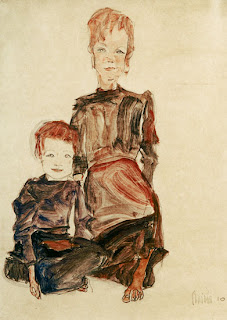The fact that the recommendation to restitute was made in the first place is excellent. That is what the job of the Commission is—to advise the Minister of Culture on restitution matters pertaining to works and objets d’art plundered from Jewish owners after the Nazi Anschluss of Austria on March 10, 1938.
If one consults the Austrian press, articles in papers like Der Standard outline a more complex story regarding the fate of these looted works on paper and of their owner than what one could glean from the English-language press.
First of all, we find out that Karl Maylander did not just get sent to a “Polish labor camp”. He was deported from Vienna to the ghetto of Lodz or Litzmannstadt, a major recipient of Jewish deportees from the Greater German Reich. Further research indicates that Maylander was on Transport No. 8 leaving Vienna “nach dem Osten” on October 23, 1941, with many of his Jewish peers In case anyone is curious about his fate, the history of the Lodz Ghetto has been extensively researched and there is a wealth of information, both archival and secondary, which is easily accessible. Chances are that Maylander perished in the ghetto or during one of the exterminationist “Aktions” undertaken against children and senior citizens.
Second of all, one article in Der Standard reveals the name of the postwar purchaser of the works—Etelka Hofman, someone who knew Maylander well. The article makes it clear, however, that she was not entitled to the works as a rightful heir. Hence, she acquired looted cultural property. As with so many people who were deported from Austria, Maylander died intestate which meant that his belongings were taken over by an Austrian bankruptcy court and his assets sold. Of course, the legal system being what it is, the fact that someone disappears intestate owing to his or her persecution does not impinge in any way on the administration of so-called heirless property in anti-Jewish Austria. This method of dissipating Jewish-owned assets enabled many individuals to acquire them at bargain-basement rates, including significant decorative objects and works of art.
The decision to recommend restitution in no way binds the Minister of Culture or the Albertina Museum to “do the right thing.” Hence, this is just the beginning of a potentially lengthy process, not its denouement.
 |
| Proletarier Kinder Source: Art-Prints-On-Demand |
 |
| Mädchen mit Sonnenbrillen, 1910 Source: Wikipedia |
 |
| Blindis Olga Gallus Source: Wikipedia |
 |
| Portrait of Heinrich Benesch Source: Oil-Paintings |